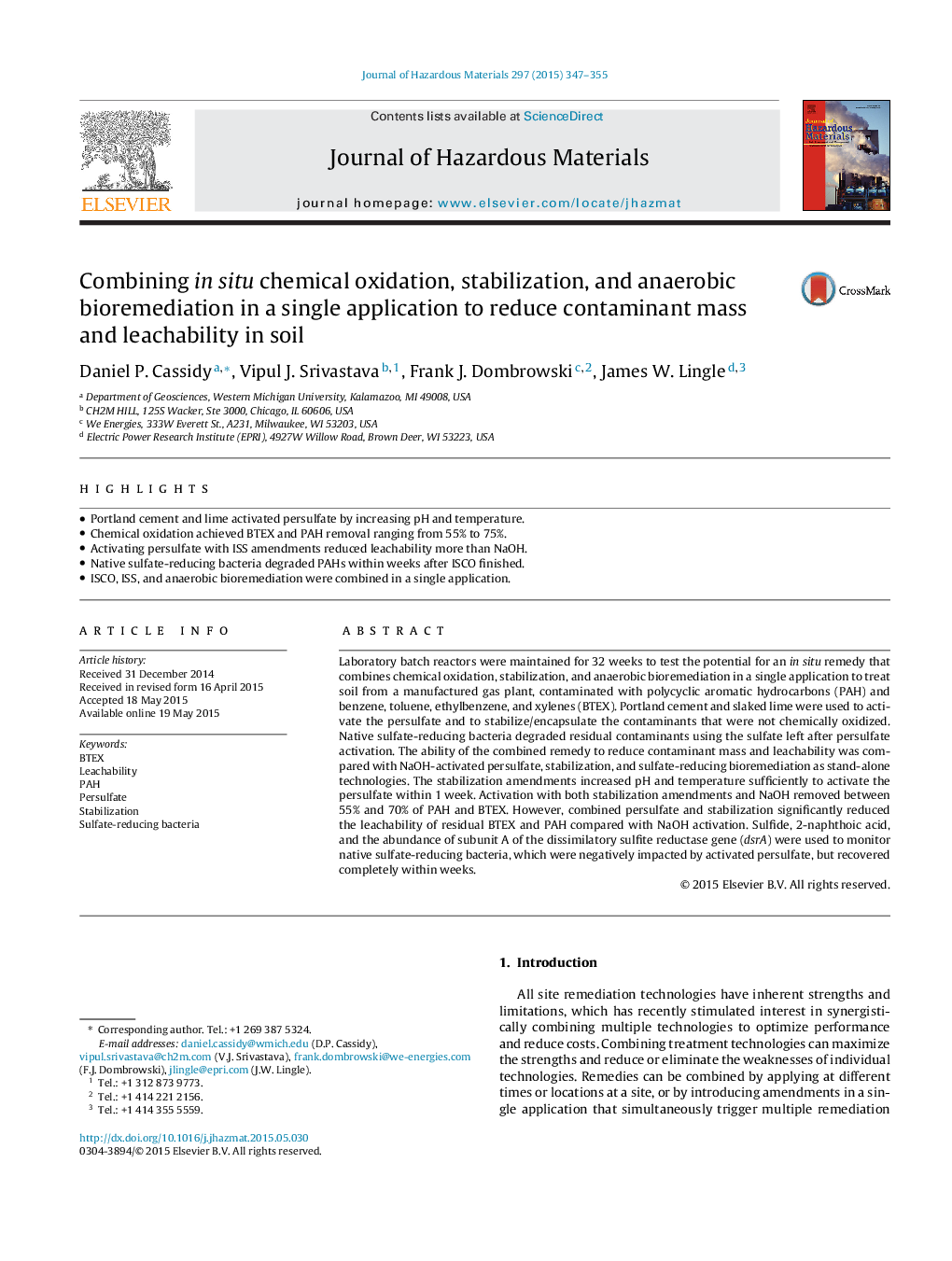| Article ID | Journal | Published Year | Pages | File Type |
|---|---|---|---|---|
| 6971023 | Journal of Hazardous Materials | 2015 | 9 Pages |
Abstract
Laboratory batch reactors were maintained for 32 weeks to test the potential for an in situ remedy that combines chemical oxidation, stabilization, and anaerobic bioremediation in a single application to treat soil from a manufactured gas plant, contaminated with polycyclic aromatic hydrocarbons (PAH) and benzene, toluene, ethylbenzene, and xylenes (BTEX). Portland cement and slaked lime were used to activate the persulfate and to stabilize/encapsulate the contaminants that were not chemically oxidized. Native sulfate-reducing bacteria degraded residual contaminants using the sulfate left after persulfate activation. The ability of the combined remedy to reduce contaminant mass and leachability was compared with NaOH-activated persulfate, stabilization, and sulfate-reducing bioremediation as stand-alone technologies. The stabilization amendments increased pH and temperature sufficiently to activate the persulfate within 1 week. Activation with both stabilization amendments and NaOH removed between 55% and 70% of PAH and BTEX. However, combined persulfate and stabilization significantly reduced the leachability of residual BTEX and PAH compared with NaOH activation. Sulfide, 2-naphthoic acid, and the abundance of subunit A of the dissimilatory sulfite reductase gene (dsrA) were used to monitor native sulfate-reducing bacteria, which were negatively impacted by activated persulfate, but recovered completely within weeks.
Related Topics
Physical Sciences and Engineering
Chemical Engineering
Chemical Health and Safety
Authors
Daniel P. Cassidy, Vipul J. Srivastava, Frank J. Dombrowski, James W. Lingle,
